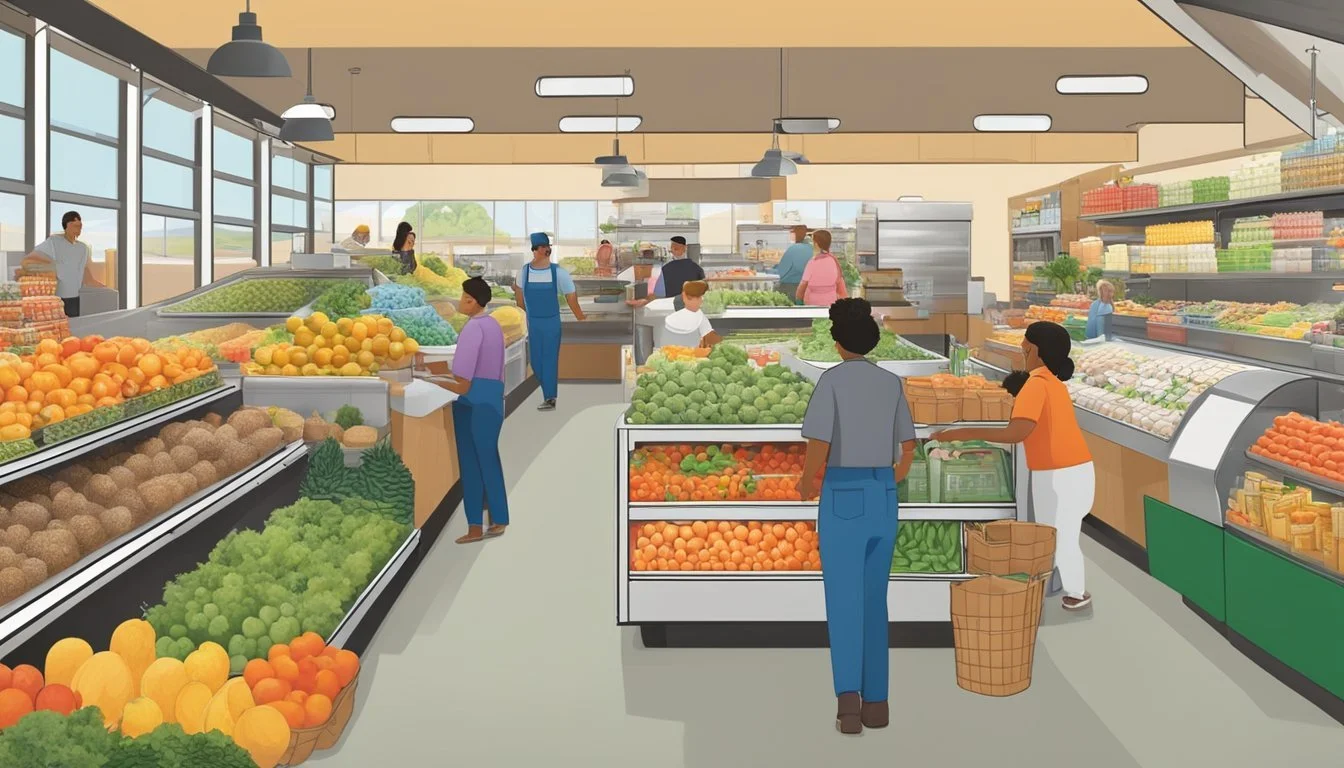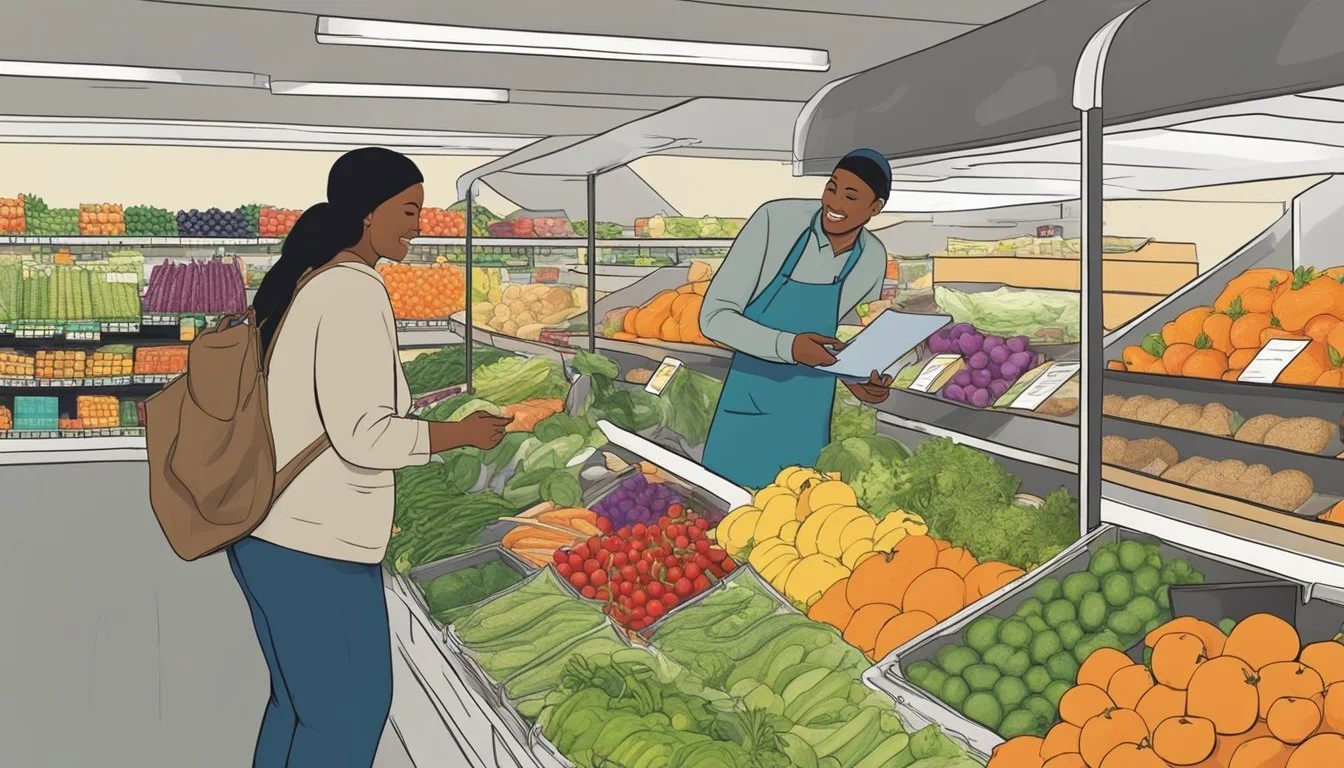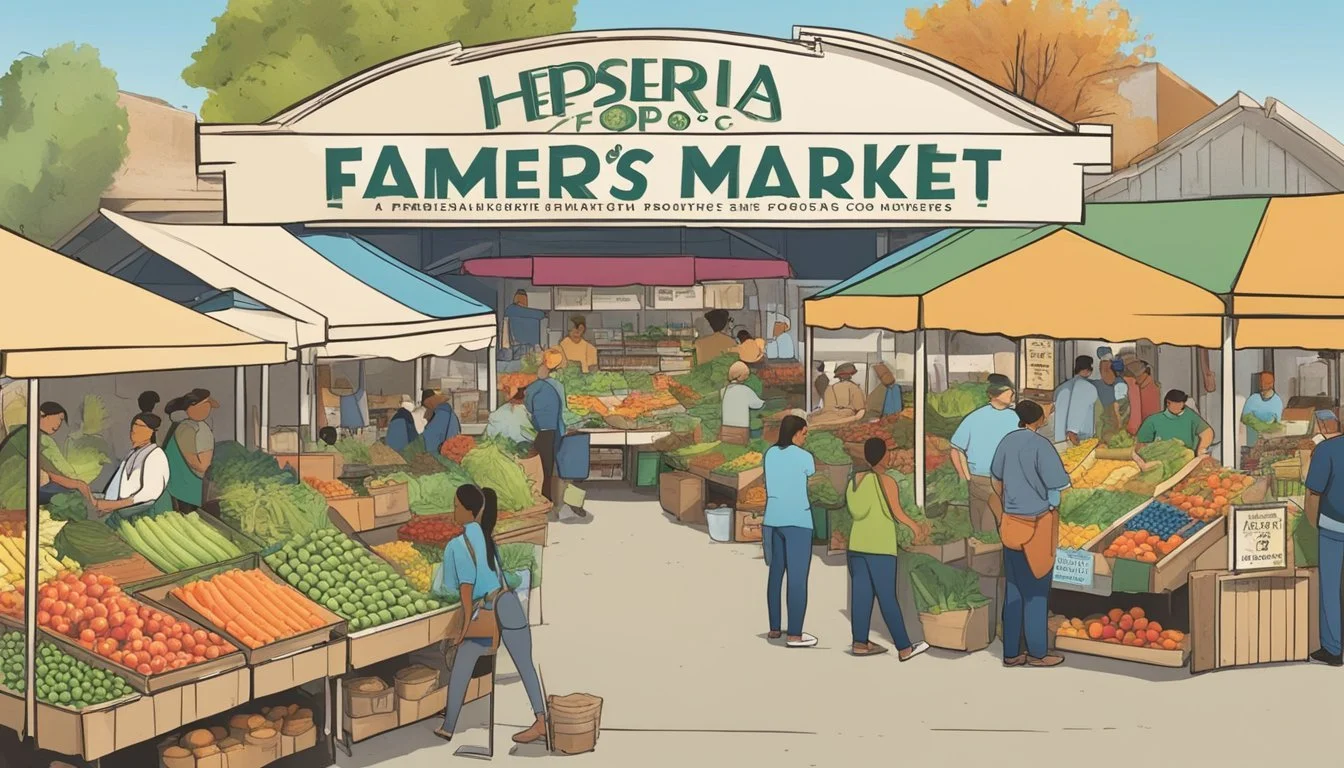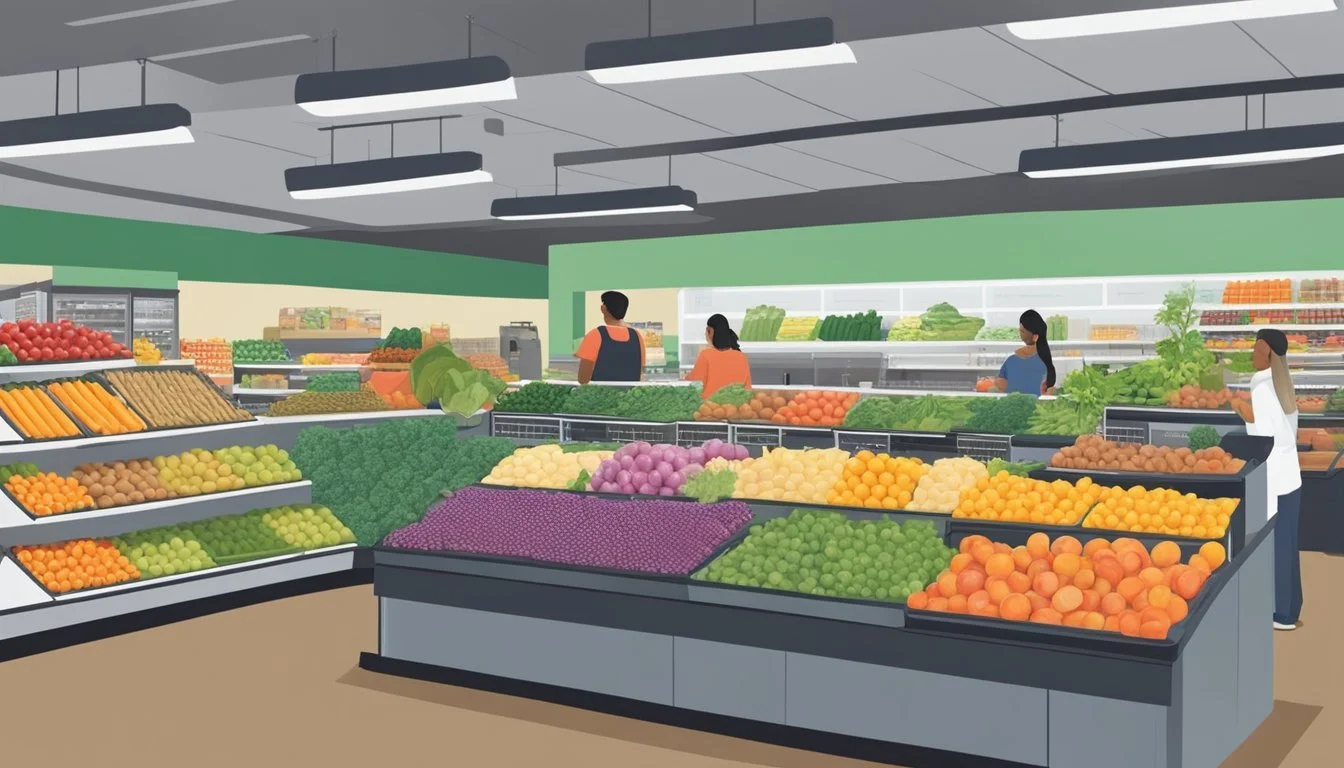Guide to Food Co-Ops in Hesperia, CA
Your Local Healthy Eating Resource
Food cooperatives are a staple in many communities, offering a unique alternative to traditional supermarkets by focusing on locally sourced and sustainable products. Hesperia, California, is no exception, with its own array of food co-ops that contribute not only to the health and well-being of its residents but also to the local economy. These community-led establishments prioritize organic, healthy food options that are grown and produced in and around the Hesperia area.
The Tri-Community Co-op in nearby Wrightwood is an exemplary model, illustrating the dedication to nurturing community health through sustainably grown produce. This co-op is a clear reflection of the collaborative spirit prevalent in the region, where members take an active role in the food system. Not only do these cooperatives provide fresh options, but they also serve as communal spaces for people to connect and share their passion for good, wholesome food.
In addition to co-ops, Hesperia offers food assistance through various pantries that supplement the needs of community members facing food insecurity. These services provide essential support and demonstrate a strong network of care within the community. They operate on different days of the week, ensuring that access to food is available when most needed by residents. Through a combination of co-ops and food assistance programs, Hesperia stands out as a community that values both healthful eating and the well-being of its residents.
Understanding Food Co-Ops
In Hesperia, CA, and broadly, food co-ops serve as community-centered alternatives to traditional supermarkets, aiming to meet the grocery and household needs of their members. They operate on a cooperative model, which involves mutual benefits and responsibilities.
The Concept of Cooperation
A food co-op is a grocery store that operates on a co-operative model, meaning it is owned and controlled by the community members who utilize its services. Each member has a say in the decisions and direction of the store. They work on a not-for-profit basis, where surplus income is reinvested in the co-op or shared among the members. This model focuses on providing quality produce and household items while adhering to the principles of democratic member control, economic participation, and autonomy.
Key Principles:
Democratic member control
Economic participation
Autonomy and independence
Types of Food Co-Ops
Food co-ops can be categorized primarily into two types:
Retail Co-Ops: These are storefront operations where members and non-members can purchase goods. They typically offer a wide array of organic and sustainably-sourced produce and household products.
Buying Clubs: Smaller in scale than retail co-ops, buying clubs are groups of individuals who order in bulk directly from suppliers to save on costs. Members often take turns organizing orders and distributing products.
Comparison:
Type Scale Accessibility Product Source Retail Co-Ops Larger Open to all Various suppliers Buying Clubs Smaller Members-only Bulk orders
Both types emphasize community engagement and aim to support local producers and suppliers where possible, enhancing the local economy and ensuring consumers have access to fresh, high-quality goods.
Benefits of Joining a Food Co-Op
In Hesperia, CA, joining a food co-op brings with it a trove of benefits, from economic savings to enhancing personal health and bolstering community engagement. Each benefit serves to improve the shopping experience in unique ways.
Economic Advantages
Savings: Members of a food co-op often enjoy economic benefits such as shopping discounts and potential patronage refunds. These financial perks are more than just simple savings; they're a share in the co-op's success.
Local Economy: The economic impact extends beyond individual savings, as co-ops tend to keep more money circulating within the local economy. They support local producers, which in turn can lead to more jobs and greater financial stability within the community.
Health and Product Quality
Healthy Choices: Food co-ops in Hesperia prioritize the availability of fresh, organic produce and high-quality food products. By doing so, they cater not only to health-conscious individuals but also to those with specific dietary needs.
Quality Standards: With a focus on organic and locally-sourced offerings, co-ops set high quality standards. They provide options like grass-fed beef and cage-free eggs, which align with a commitment to more sustainable and ethical farming practices.
Social and Educational Benefits
Community Connections: Co-ops are deeply rooted in their communities, fostering a sense of connection among members who share similar values. This social aspect brings together like-minded individuals who support food sustainability and community well-being.
Education: They are often hubs for learning, offering educational programs on nutrition, cooking, and sustainable living. This empowers members with knowledge that extends far beyond their shopping habits, contributing to a well-informed community.
Operation of Food Co-Ops in Hesperia
In Hesperia, California, food co-operatives operate through a collective effort that relies on member-owners, a board of directors, and volunteer contributions. These components work together to ensure governance and the success of the co-op.
Member-Owner Structure
Food co-ops in Hesperia exemplify a member-owner structure, where individuals purchase shares and become part-owners of the cooperative. Member-owners have a vested interest in the operational success of the co-op as they benefit from its services and share in its profits. They also have a voice in decision-making processes, often voting on major initiatives and helping to shape the direction of the store.
Volunteer Contributions
Volunteer efforts are crucial to the operation of food co-ops in Hesperia. Volunteers commit their time and skills to various tasks, from stocking shelves to helping manage the day-to-day operations. This labor contribution can sometimes lead to discounts on purchases or other benefits within the co-op. While not all tasks are handled by volunteers, their involvement is significant in minimizing operational costs and fostering community engagement.
Board of Directors and Governance
The Board of Directors is responsible for the governance of Hesperia's food co-ops, ensuring they adhere to their mission and the needs of their member-owners. They are typically elected by the member-owners and hold the authority for major decisions. The Board sets policies, oversees the co-op's financial health, and hires management personnel when necessary. They also play a key role in long-term strategic planning, while daily operations are typically handled by the co-op staff and volunteers.
Local Food Systems and Hesperia's Food Co-Ops
In Hesperia, California, food co-ops serve as critical junctions in the local food economy, supporting area farmers and refining the distribution and retail of locally grown produce.
Supporting Local Farmers
Food co-operatives in Hesperia have established strong partnerships with local farmers, ensuring that there is a steady demand for their produce. By prioritizing business with local agricultural operations, these co-ops contribute to the economic vitality of the region and provide consumers access to fresh, region-specific produce. The commitment to buy local is a tenet of the food co-op model, which often results in co-ops doing a significantly higher volume of business with local producers compared to traditional grocery stores.
Local Economic Impact: Co-ops in Hesperia consistently inject revenue back into the local economy through their support of area farmers.
Freshness and Quality: By sourcing directly from Hesperia's local farmers, co-ops can offer consumers produce that is often fresher and of a higher quality than that which has been shipped from afar.
Food Distribution and Retail
When it comes to food distribution and retail, Hesperia's co-ops play a pivotal role in creating a more resilient and equitable food system. Not only do they provide a marketplace for local farmers, but they also offer a diverse range of products to the community, often including items from marginalized producers. This leads to a more inclusive food system, fostering food security and accessibility for members and non-members alike.
Efficient Distribution: Co-ops streamline the path from farm to table, minimizing the delay between harvest and purchase.
Inclusive Retail: By featuring products from a variety of producers, co-ops ensure that economic participation extends to all sectors of the community, including traditionally underrepresented groups.
In summary, Hesperia's food co-ops stand as essential contributors to the local food system, nurturing the bond between local farmers and consumers through sustainable and inclusive practices in food distribution and retail.
Participation and Contributions
Food co-ops in Hesperia, CA, offer a unique way for the community to engage with their local food system. Participation in these cooperatives is multifaceted, involving membership, investment, and the sharing of patronage dividends.
Becoming a Member
To participate in a food co-op, an individual typically needs to purchase a membership. This confers the right to shop at member prices, vote in cooperative decisions, and partake in special member-only events. Members may also be asked to volunteer or participate in community events to strengthen the co-op's local presence and contribution.
Investment and Patronage
Investment in a co-op goes beyond the initial membership fee. Members can often make additional investments, which are used to fund the co-op's operations and expansion efforts. These investments might come in the form of purchasing preferred shares or providing loans.
Patronage Dividends are a unique feature of co-ops; they represent the return of surplus revenue to the members based on their patronage, or how much they've shopped at the co-op during the year. Unlike traditional businesses that may distribute profits based on investment, co-ops allocate dividends according to use, thereby ensuring the financial benefits circle back to the community that supports them.
Financial Aspects and Savings
Food co-ops in Hesperia, CA, provide a distinctive financial framework for members and the community. They prioritize affordability and food security while offering benefits that extend to individual savings and community support.
Member Financial Benefits
Members of food cooperatives typically experience financial gains through quantity discounts and other savings. By pooling resources, members can purchase food and other goods in larger quantities at lower prices. Additionally, being part of a co-op can mean access to programs that assist with healthcare benefits and facilitate building retirement savings, enhancing the financial security of the co-op's workforce.
Affordable Access to Food
Food co-ops are instrumental in making healthy food more affordable and accessible. In Hesperia, they may work with local credit unions to offer special programs aimed at increasing food security for members and non-members alike. This collaboration can result in better financial terms and support mechanisms for purchasing food, thus improving overall access to nutritious food options for the community.
Community Building and Support
Food cooperatives in Hesperia, CA, serve as important hubs for strengthening community ties and supporting local residents with food assistance and educational resources. They emphasize sustainable, locally-sourced produce and prioritize community welfare through various services.
Fostering a Community Network
The backbone of any successful food co-op is its community network. By collaborating with local organizations, food co-ops create a strong support system that benefits both producers and consumers. They host public meetings and partner with local farmers to facilitate a direct exchange that not only aids in food distribution but also encourages a sense of community ownership and shared responsibility.
Regular Public Meetings: Enabling continuous dialogue and feedback among members.
Partnerships with Local Farmers: Ensuring a supply of fresh, organically grown produce while supporting the local economy.
Educational Programs and Outreach
Education plays a critical role in the mission of Hesperia's food co-ops. They offer outreach programs to inform members about the importance of supporting local agriculture and the benefits of healthy eating.
Workshops: Conducted to educate on nutrition and sustainable food practices.
Awareness Campaigns: Aimed at increasing community participation and educating on the economic benefits of local purchasing.
By focusing on these areas, Hesperia's food co-ops not only provide essential services but also contribute to the creation of a well-informed and engaged community.
Navigating Challenges
In Hesperia, CA, food co-ops face two primary challenges: maintaining sustainable business practices and addressing issues of food insecurity within the community.
Sustainable Business Management
Food co-ops in Hesperia operate with the conscious intent of integrating sustainable practices into their business models. Management teams focus on creating economically viable operations that can withstand local market fluctuations. This involves careful planning and execution in areas like sourcing, pricing, and member engagement. They must balance the needs of their members with the financial health of the cooperative business to ensure longevity and reliability in the services they provide.
Addressing Food Insecurity
Co-ops inherently strive to bolster food security. In Hesperia, these cooperatives take an active role in making nutritious food more accessible to residents. They work alongside local programs and pantries, participating in a broader network that aids those facing food scarcity. By doing so, they serve as critical components in the fight against food insecurity, offering options for fresh and affordable produce to low-income and at-risk community members. Co-ops also utilize community outreach and education initiatives to spread awareness and provide resources related to healthy eating and food sustainability.
Future of Food Co-Ops
The evolution of food co-ops is closely linked to their ability to innovate and expand their influence within the food industry. These entities are poised to leverage growth opportunities through novel cooperative models and by strengthening their presence in the market.
Innovation in Cooperative Models
In Hesperia, California, food co-ops are embracing technological advancements to redefine the member experience. They are incorporating robust data analytics to tailor their offerings and address consumer preferences. Additionally, initiatives that focus on sustainable practices are at the forefront, such as zero-waste programs and locally-sourced product lines which contribute to environmental stewardship.
Expansion and Influence
The network of food co-operatives is expanding in Hesperia, marking a notable growth in both economic and community impact. They are not only increasing in number but also enhancing their roles as educators and leaders in social justice movements, such as promoting food sovereignty. New partnerships are forming with national organizations to foster a more extensive cooperative framework, solidifying these co-ops as critical engines in the regional and national food systems.
Food Co-Op Directory
In the Hesperia area, individuals seeking fresh, locally sourced produce have options to join food co-ops, such as the Farm2Mountain Produce Club in Big Bear Lake. This club aligns itself with the values of healthy and sustainable living, providing organic produce sourced directly from farms. Jaime Organic Farms based in Chino, as well as suppliers from Yucca Valley, facilitate the delivery service every Tuesday.
Food co-ops are not only a source of fresh produce; they also serve as a nexus for community building within the Inland Empire. They typically support local farmers and businesses, strengthening the regional economy and providing members with the opportunity to purchase groceries that are both organic and natural.
For those residing in or near Hesperia, CA, and looking for more traditional grocery items, including bulk or overstocked goods at reduced prices, local food co-ops stand as a valuable resource. By joining, one can enjoy the convenience akin to that of a regular grocery store while acquiring healthier food choices.
Aside from the aforementioned clubs, there are additional food assistance resources in the neighboring area of Victorville, CA. Though not directly in Hesperia, these can be indispensable for individuals in need. For example, the Food Pantry at First Presbyterian Church of San Bernardino offers services within reasonable proximity.
These community-oriented food hubs exhibit a commitment to making wholesome food accessible, along with fortifying local connections. Here, members often find more than just food — they discover camaraderie and a shared dedication to a better food system.
Conclusion
Hesperia, CA, offers a noteworthy connection to sustainable living through its food co-ops. These cooperatives serve as pillars in the local community, championing both health and environmental consciousness. The Tri-Community Co-op stands out as a beacon for members driven by a dedication to sustainable, local produce. It exemplifies the quintessential values of food co-ops: supporting local producers, and promoting organically grown offerings.
Residents can take pride in their network of food assistance programs, with pantries providing vital support. The cooperative model in California has a resilient history, despite setbacks such as the closure of the Berkeley food cooperative. The trend in the state shows many thriving co-ops that have formed over the past four decades. Critical resources for starting and sustaining these ventures come from organizations like the Food Co-op Initiative and legal assistance from the Sustainable Economies Law Center.
Participation in a food co-op extends beyond mere shopping. It represents a collective investment in community well-being and a commitment to sustainable food systems. Each member’s involvement strengthens the local economy and supports equitable food access. In Hesperia, embracing the co-op model translates to a robust, health-conscious, and interconnected community.
For anyone interested in the co-op scene, Hesperia serves as a small but significant example of what collective action and consumer choice can achieve. The community's engagement with food co-ops is more than an economic choice—it's a reflection of a collective ethos centered on health, sustainability, and shared prosperity.









